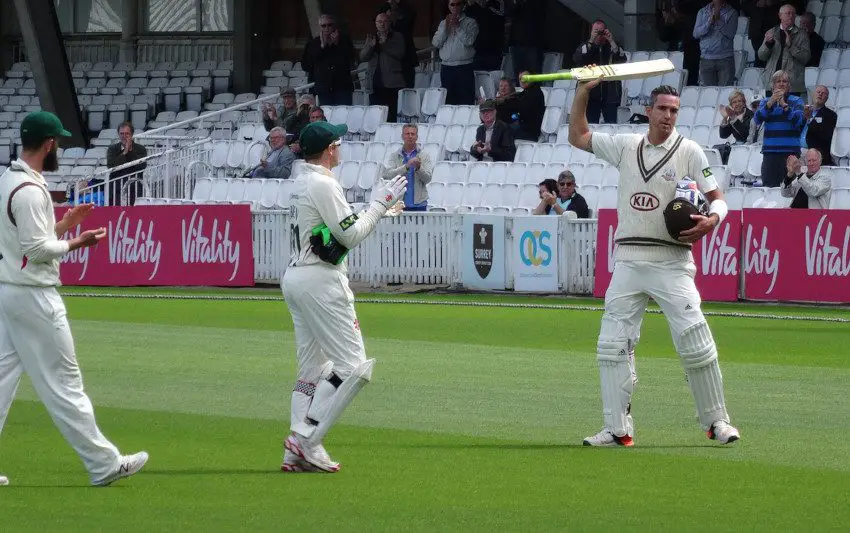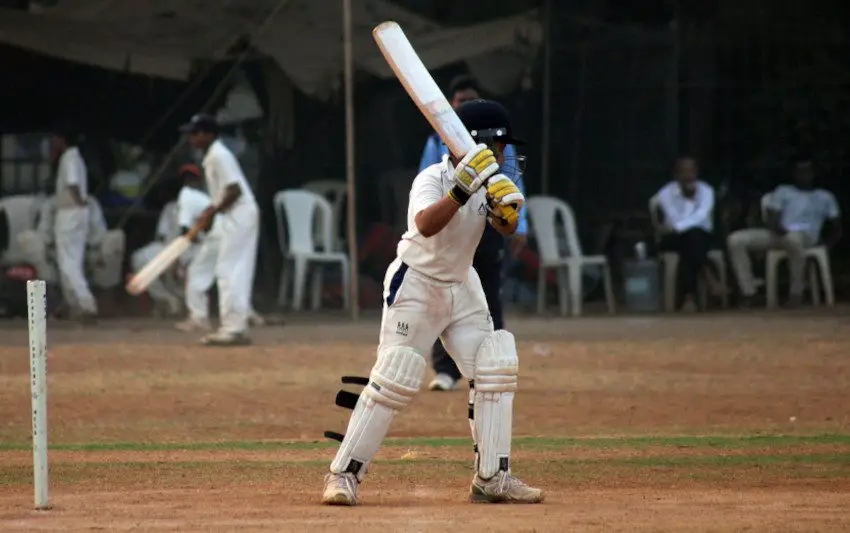Table of Contents
It was one of cricket’s most notorious match fixing scandals but how much do we know about the Hansie Cronje affair?
What Happened – in a Nutshell
Most cricket fans will be aware of the game in which Hansie Cronje’s actions came to a head. When South Africa hosted England at Centurion in 2000, a rain affected game saw a generous declaration by Cronje which allowed the tourists to achieve a dramatic win.
In reality, South Africa’s captain had contrived to force a result for the benefit of the bookmakers. It was the most notorious incident but this was just the culmination of a period of deception.
Five years earlier, Cronje was first approached in regards to fixing a game of cricket. He turned down the offer on that occasion but was shortly to be tempted into corruption. He first accepted a bribe from a bookie in 1996 and the slippery slope descended from that point.

Timeline of Events in Hansie Cronje’s Match Fixing
This is how it all developed:
- 1994/95: Hansie Cronje is made captain of the South African test team to tour New Zealand.
- 1995: In January of 1995, Cronje is approached by a bookmaker ahead of an ODI with Pakistan. He is offered $10,000 to throw the game but, while he declines, the seed of corruption has been sown.
- 1996: While in India, Hansie Cronje is introduced to a notorious Indian bookmaker by the name of Mukesh Gupta. Known as MK, Gupta offers $30,000 to the player which he accepts. The money is given in exchange for South Africa losing the match to India on the final day.
- Cronje does not tell his team about the deal but he keeps the money. South Africa lose without his influence.
- 1996: The final game of that Indian tour is an ODI. With Cronje now in the bookmaker’s pocket, he is offered $250,000 to lose the game. The skipper calls a team meeting where every member of the squad attends. As a unit, they unanimously agree to reject the offer but some players remain after the official meeting comes to an end.
Discussion over whether a group of players can throw the game takes place
- 1996: We’re still in 1996 as India complete a reciprocal arrangement and begin a tour to South Africa. Once again, the infamous bookmaker MK is in attendance and he’s now aware that South Africa’s captain is open to an approach.
Ahead of the first test, it’s claimed that Hansie Cronje received $50,000 for information regarding team selection and on a declaration first innings score. It’s also said that he was offered $300,000 to lose the third test but he refused to comply on that occasion.
It’s worth noting here that Cronje claimed to have only ever taken money in return for information – not for fixing a game. That claim is, however, a disputed one.
- 2000: The Hansie Cronje match fixing story now takes a leap forward to England’s tour of South Africa in 1999/2000. The South Africans were 2-0 up in the series and, as the teams headed to Centurion for the final game, they were contesting a dead rubber.
Rain had played a huge part in the first days of this final test and, under normal playing circumstances, there would have been no chance of a result on the final day. However, after some negotiations between Hansie Cronje and his opposite number Nasser Hussain, both teams effectively forfeited their second innings.
This left England with a victory target of 249 which they chased down with just two wickets to spare. To the unknowing English side and the wider cricket community, this was a thrilling climax to the tour but the contrived result had sinister motives.
On the eve of the final day, Cronje was called by a well known South African bookie by the name of Marlon Aronstam. Cronje was offered a ‘gift’ if he made a game of the final test while Aronstam also promised a donation to charity.
In the aftermath of the result. Aronstam presented Hansie Cronje with 50,000 Rand and a leather jacket. In some isolated quarters, there had been concerns over the result in Centurion and it was from this point that Cronje’s life began to unravel.
- April 2000: Hansie Cronje is relieved of his duties as South Africa’s captain after he confesses to Ali Bacher that he received money in return for information for the India games.
- A day later, it is revealed that the Centurion test of January 2000 is to be reviewed following allegations of match fixing.
- June 2000: The King Commission Enquiry starts to investigate Hansie Cronje’s affairs. During the course of the investigation, a number of South African players will testify against their former skipper.
- Pat Symcox was the first of these: He said he was present at the team meeting in Mumbai in 1996 and that Cronje had also discussed the question of throwing a one dayer against Pakistan in 1995.
- Herschelle Gibbs, Nicky Boje and Henry Williams were next. All three had been offered money by Cronje to underperform in certain games.
- The evidence was damning and, at the conclusion of the enquiry, Cronje is offered immunity from criminal prosecution, providing he makes a full declaration of his involvement in match fixing. From this point onwards, the full shocking story starts to come out.
It was an unsavoury time in international cricket and there is no happy ending to the Hansie Cronje story. In October 2000, the UCBSA – the governing body in South African cricket at the time – gave their former skipper a lifetime ban. He was to take part in no further cricketing activities of any kind.
- 2002: Whether a later amnesty would have been implemented will never be known. On June 1st 2002, Hansie Cronje died in a light aircraft crash at the age of 32. While he was a pariah in cricketing terms at this time, this was an incredibly sad ending.
With South Africa having only been re-admitted to international cricket in 1992, Cronje’s actions had cast a shadow over what should have been a positive time for the country.
Match Fixing in Cricket
While Hansie Cronje’s involvement in match fixing may have been the most notorious case of all time, it sadly wasn’t an isolated incident. There have been other cases where players have fallen foul of bookmakers’ offers as they look to fix a game.
One of the biggest issues in cricket relates to ‘spot fixing’. It’s tough for one player to influence the outcome of a team sport but they can shift the betting in other markets. The most famous case of spot fixing came in 2010 in a test series between England and Pakistan.
Pakistan bowlers Mohammad Asif and Mohammad Amir both bowled no balls at designated points in the game. They, along with their skipper Salman Butt, received lengthy bans.
Other notable incidents include the New Zealand trio of Lou Vincent, Chris Cairns and Daryl Tuffey who received bans for match fixing in 2013. There are other cases and, while these are thankfully few, it’s been an issue within cricket that hasn’t quite gone away.


